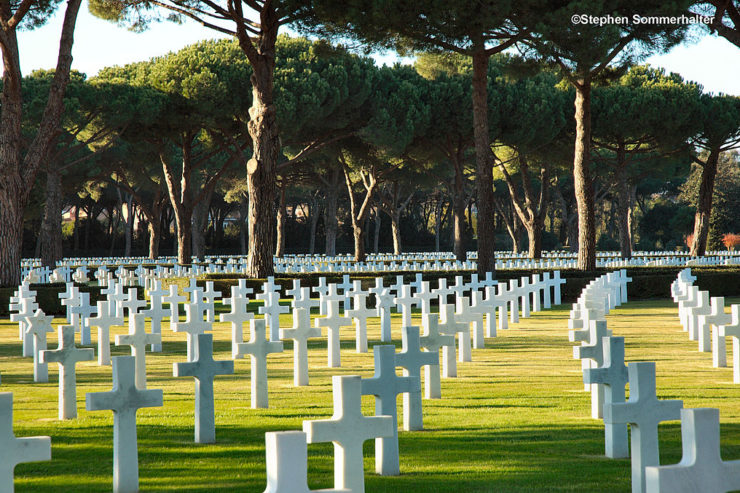Pope Francis will go to the American Military Cemetery of Nettuno, near Anzio, some 66 kilometers south of Rome, where he will celebrate Mass “for all the victims of wars,” on November 2, 2017, All Souls Day, around 3:15 pm, announced the Holy See Press Office.
Anzio is the place where the Allies landed in January of 1944. On January 22 of that year, the Allied Army went to Anzio. On board were 110,000 men ready to disembark, explains the Website dedicated to World War II, from which this account is taken.
Early in the morning, the fleet began to shell the beaches for more than half an hour. Planes carried out 1200 sorties the same day and bombed the telecommunications network. The troops were then able to land. They met with very little resistance on the beaches; less than 70 were killed.
However, the Germans reacted and encircled the bridgehead three hours after the landing. The Luftwaffe supported the German infantry, helping it to contain the rising allied tide going to Rome and the Alban Hills.
On January 26, 30,000 Germans barred the route to the 110,000 Allies. Hitler sent a reinforcement of 40,000 men and ordered them to “eradicate the Allied menace.” Ten days after the landing, there were 10,000 dead Allies and Germans.
On February 3, 1944, the Germans prepared a counter-offensive, with the same tactic as at Dunkirk four years earlier. The fighting raged. The Americans were preparing to withdraw when they learned that the Germans ran out of ammunition.
In fact, on March 1, 1944, paralyzed by the lack of ammunitions, the Germans halted the offensive. The two camps buried themselves in the trenches. The Germans were cold, they were malnourished and it rained for six days out of seven. They had gigantic cannons come by railroad, including mortars Karl and Leopold.
In mid-May, the Americans decided to take recourse to planes: with them, they bombed the buried Axis Powers, which were annihilated.
The Allies took up the offensive. The Germans began to withdraw. A very orderly German withdrawal began on June 2 and, on June 4, 1944, Rome was liberated.
Zenit translation by Virginia M. Forrester
JF

Cimetière Militaire Américain De Nettuno (Italie), Creative Commons, Stephen Sommerhalter
Remember Deceased: Pope’s Mass “for the Victims of Wars”
Celebration at the American Military Cemetery of Nettuno


